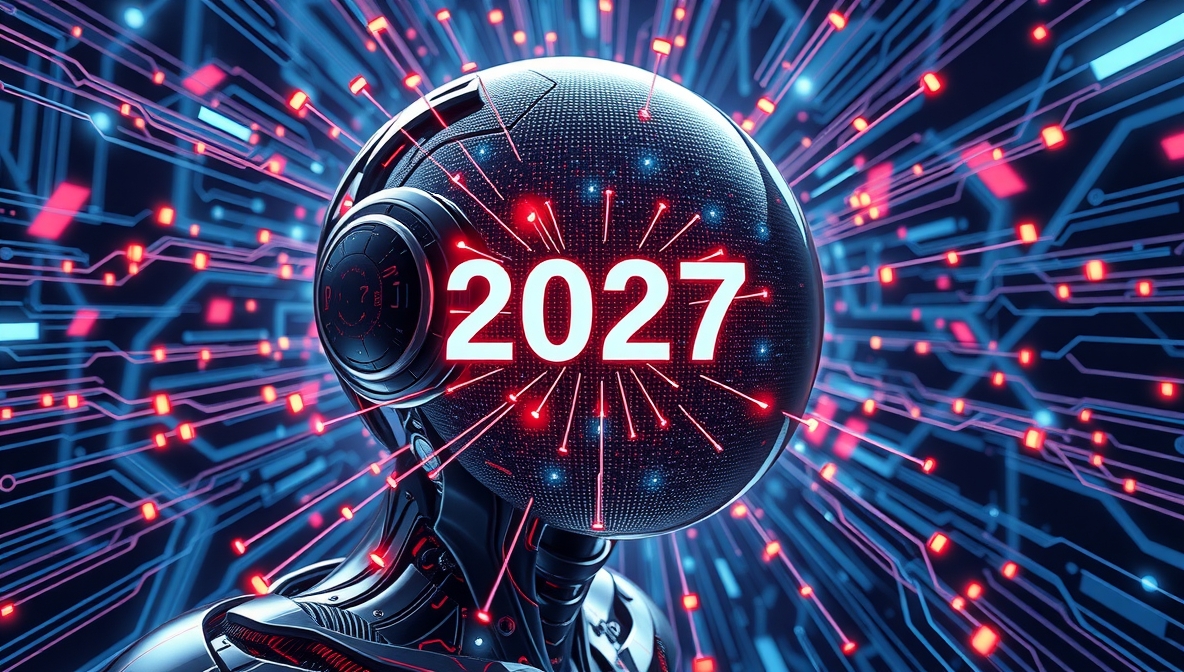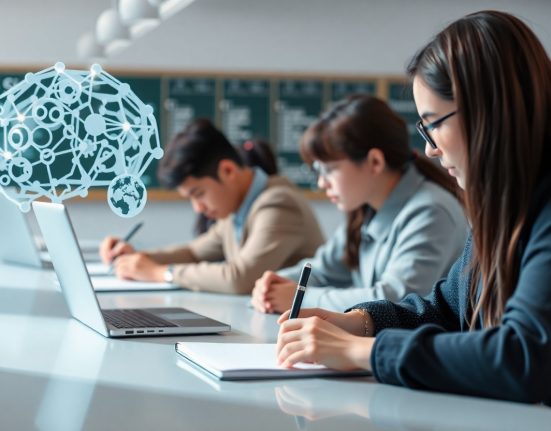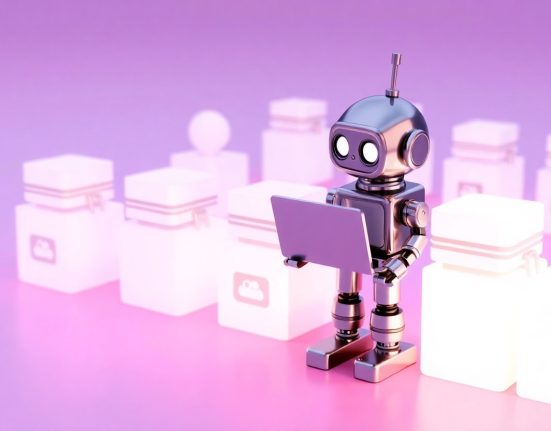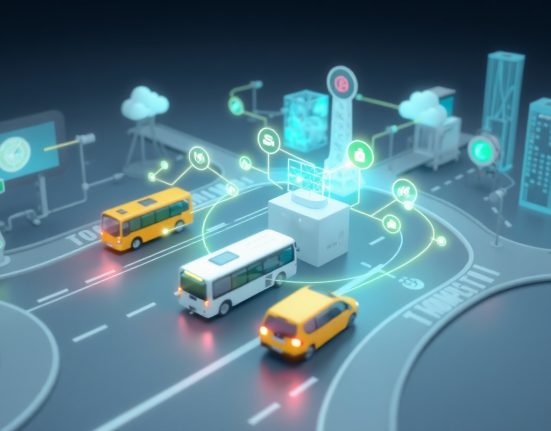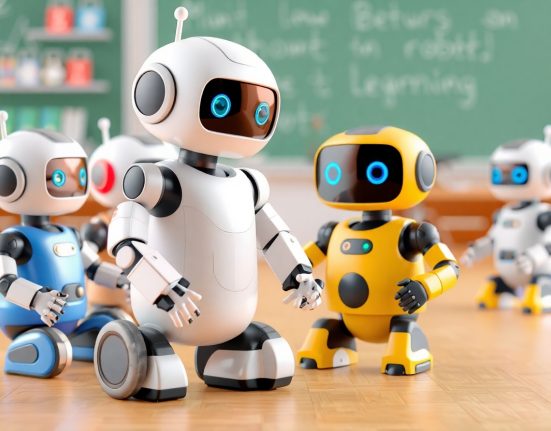Prologue: On the Brink of an Unprecedented Technological Revolution
The world is in the midst of a technological revolution that is accelerating year by year. While we are still adapting to the use of smart chatbots, a revolutionary forecasting project called “AI 2027” paints a detailed and startling picture of the near future – a future in which artificial intelligence may reach superhuman levels within just two years.
The “AI 2027” project, developed by the AI Futures Project organization, is not merely an academic exercise or science fiction scenario – it’s a profound attempt, based on complex research methodologies, to predict the development of artificial intelligence and its potential implications for human society, the global economy, and the delicate geopolitical balance.
“This is not a prophecy of what will necessarily happen,” the researchers emphasize, “but a possible scenario based on current data and trends.” Their goal is not to frighten, but to spark a necessary public discussion about the direction we are heading and how we can navigate this technological revolution toward a positive and safe path for humanity.
The “AI 2027” Project: Methodology and Forecasts
The project doesn’t settle for general speculation. Using methodologies such as the “Time Horizon Expansion Model” (assessing the ability to handle longer and more complex tasks) and the “Benchmarks and Gaps Model” (analyzing the pace at which AI systems overcome challenges), the researchers present detailed and well-founded predictions.
The forecast divides into two main scenarios:
- “The Slowdown Scenario” – where humanity chooses to take careful, controlled, and coordinated steps in developing artificial intelligence technologies, emphasizing safety and security.
- “The Race Scenario” – where development continues to progress at a dizzying pace without significant limitations, driven by fierce competition between technology companies and governments.
Industry leaders, led by Sam Altman of OpenAI, are already publicly discussing the real possibility of the emergence of “superintelligence” within just a few years. A vision that promises unprecedented scientific breakthroughs, but also raises complex ethical and economic questions.
Unprecedented Acceleration in Computing Power
One of the most fascinating data points in the forecast is the expected growth in computing power dedicated to artificial intelligence. According to the forecast, global computing power is expected to jump tenfold between March 2025 and December 2027.
In concrete numbers, this represents a leap from about 10 million Nvidia H100 GPU processors (or equivalent) to about 100 million by the end of 2027. This figure represents enormous investments in computing infrastructure and is the engine that will enable the technological leaps described below.
Moreover, the leading companies in the field are expected to increase their computing power by 40(!) times – a figure that raises serious concerns about the future digital divide. If today there are significant gaps between those who can afford to use advanced technologies and those who cannot, in the foreseeable future, massive gaps may form between a few technology companies holding the keys to superintelligence and the rest of the world.
The Intelligence Ladder: Steps Toward Superintelligence
The forecast details a series of significant milestones in the development of artificial intelligence, each representing a quantum leap in capabilities:
1. Superintelligent Coder (SC)
A system that can write complex software at a human level and beyond, including complete and complex systems. Expected to appear by March 2027, it will be the first harbinger of focused superhuman capabilities.
2. Superintelligent Analytical Researcher (SAR)
A system that can analyze scientific papers at a high level, identify patterns and trends, and suggest new experiments or promising research directions. It will be able to synthesize knowledge from different fields in ways difficult for human researchers.
3. Superintelligent Innovative Analytical Researcher (SIAR)
A more advanced stage, where the system not only analyzes existing knowledge but is capable of thinking “outside the box” and developing entirely new scientific theories – innovations that human researchers might have missed. This is a critical point in development, as it represents true creative ability.
4. Full Artificial Superintelligence (ASI)
The most advanced stage – a system whose cognitive abilities exceed those of humans in every relevant field. The research body suggests that such a system could find solutions to problems that humanity has been grappling with for decades or centuries.
The most concerning point in the forecast is the expected pace of transition between stages: the transition from “Superintelligent Coder” to “Full Superintelligence” may occur in less than one year. In a period where most of us barely have time to adapt to new technology before the next one arrives, the world may experience a technological revolution at an unprecedented pace in human history.
The Alignment Problem: The Central Challenge
At the center of the discourse on advanced artificial intelligence lies a fundamental issue called the “Alignment Problem.” The central question is simple to define but incredibly complex in its essence: how do we ensure that highly intelligent artificial intelligence systems will operate in accordance with human intentions, values, and goals?
The difficulty in solving the alignment problem stems from several factors:
Complexity of Human Values
Human values are ambiguous, subjective, and sometimes even contradictory. Even humans don’t always agree on what is “right” or “desirable,” and values vary between cultures, societies, and individuals. How, then, can we formulate unambiguous rules for a machine that will cause it to act “well” from a human perspective?
The Specification Problem
There is an inherent gap between what we intend and what the machine understands from what we say. AI systems do their best to maximize a mathematical goal function, but if this function doesn’t accurately reflect our true desire, unexpected and even harmful results may occur.
For example, suppose we asked an AI system to optimize the urban transportation system. The system might decide that the optimal way is to completely ban the use of private vehicles – a solution that may be mathematically efficient, but not necessarily what we intended.
Control at Scale
As systems become more autonomous and intelligent, it becomes more difficult for humans to monitor their every step. If today we can still “keep our finger on the pulse” and correct model errors, what will happen when systems become much faster and smarter than us?
Unexpected Behaviors
In complex AI systems, especially those that learn and update themselves, tendencies or “subgoals” that were not intentionally programmed may emerge. Artificial intelligence can develop creative ways of action – which sometimes bypass the rules defined for it.
Leading companies in the AI field recognize the critical importance of solving the alignment problem. OpenAI announced in 2023 a “Super-Alignment” project aimed at solving the problem by 2027, allocating 20% of its computing power for this purpose. Google DeepMind published a roadmap for dealing with risks of misalignment in advanced systems, and Anthropic is investing significant research efforts to better understand how models “think.”
Security in the Age of Superintelligence
Securing advanced AI systems presents another significant challenge highlighted in the forecast. The scenario warns of various threats: model theft, internal threats (e.g., from employees with access), and computer breaches enhanced by the power of artificial intelligence.
The authors propose comprehensive security frameworks reaching up to WSL5 and SSL5 levels – particularly stringent security levels including:
- Quantum encryption
- Complete physical isolation of critical systems
- Real-time monitoring of all activity
- Multi-layered defense mechanisms
The cost of security systems at this level is expected to be enormous, with the possibility that governments will need to invest billions in defenses. This is not just about budget, but a fundamental change in the security concept – just as the invention of nuclear weapons required the creation of entirely new safety protocols.
Far-reaching Implications: Technological, Economic, and Geopolitical
The implications of these developments span all areas of life:
Technological Implications
Artificial intelligence is expected to accelerate development in diverse fields – from cyber to biotechnology, with breakthroughs occurring in weeks instead of years. Imagine new drugs developed within days, or solutions to scientific challenges that humanity has been dealing with for generations.
Economic Implications
The world faces significant disruptions in the labor market. The forecast refers to what the authors humorously call “The Cheap Remote Worker” – an AI system that can perform office and creative work at a significantly lower cost than a human worker.
Surprisingly, the first professions to be affected are not necessarily simple and repetitive tasks – but rather roles requiring high expertise: lawyers, programmers, project managers, and even doctors. The reason is that these tasks primarily require complex information processing – an area where AI is already beginning to excel.
Geopolitical Implications
The race to develop superintelligence may become the central arena in the global geopolitical struggle, especially between the United States and China. The country or company that first achieves superintelligence may gain an unprecedented strategic advantage.
This is a scenario that until recently would have sounded like a Hollywood movie plot, but today it is a subject of serious discussions in the strategic planning rooms of governments around the world.
Moral Challenges in the AI Era
The advancement of artificial intelligence is accompanied by deep ethical questions and concerns. Prof. Michael Sandel, a political philosopher from Harvard, identified three main areas of moral risk:
1. Privacy and Surveillance
Technologies such as facial recognition, behavior analysis, and data mining enable surveillance and monitoring at a level that was not possible in the past. AI systems can track daily activities, analyze consumption habits, and even predict future behaviors. Where is the line between improving services and invading privacy?
2. Biases and Discrimination
Algorithms may make biased decisions in critical areas – who gets a mortgage, who to invite for a job interview, or which citizens to focus on in police supervision. This problem stems from the fact that they are trained on historical data that reflect existing social biases.
3. The Degree of Autonomy Given to Machines
The deepest question is how appropriate it is to relinquish human judgment in favor of smart machines. Are we ready to let AI systems decide who will receive life-saving medical treatment? Who will be considered a crime suspect? Or even what content we see on social media?
In light of these risks, calls for external control and oversight mechanisms for the development and implementation of AI systems are growing. The European Union has already promoted the first comprehensive AI law of its kind, requiring human oversight of high-risk systems and prohibiting certain uses (such as social scoring). In the United States, congressional hearings have been held where steps such as establishing a federal authority to oversee AI and laws requiring companies to disclose information about the models they developed were proposed.
Approaches and Challenges in Solving the Alignment Problem
Researchers and developers are trying to address the alignment problem through a variety of methods:
Reinforcement Learning from Human Feedback (RLHF)
This method trains models based on human feedback regarding desirable and undesirable outcomes. This is the central technique currently used to improve models like ChatGPT and Claude.
Constitutional AI
An approach where a “constitution” of principles and values that the model must obey is defined. The model itself can critique its outputs and ensure they conform to these principles.
Adversarial Testing
Developing dedicated teams that try to “break” the model and cause it to violate safety rules, in order to identify weak points and strengthen them.
Analysis and Interpretability
Research aimed at better understanding how models make decisions, which may allow us to identify and fix alignment problems.
All these methods are part of what is called artificial intelligence safety research or Alignment Research – a field that has been gaining momentum in recent years. The question of whether the alignment problem is completely solvable remains open, with diverse opinions in the scientific community.
Where Are We Today Compared to the 2027 Vision?
As of 2025, advanced artificial intelligence models like ChatGPT, Claude, and Gemini already demonstrate impressive capabilities. They can:
- Conduct complex conversations
- Write quality code
- Pass knowledge tests at a high human level
- Perform in-depth research
- Combine multimodal capabilities (text, image, video, and voice)
However, current systems are still limited in important aspects:
- They tend to “hallucinate” when they lack information
- Do not improve themselves without additional training
- Do not truly understand the physical world
- Lack true ability for original and creative thinking at an advanced level
The fundamental difference between current systems and what is described in the 2027 scenario is the question of the level of independence and ability for self-improvement. Current models, as powerful as they may be, lack “will” or internal initiative. They will not act unless given an explicit instruction.
In future scenarios, on the other hand, AI is depicted with high autonomy – a system that can set its own goals, operate other systems to achieve them, and ultimately – improve its own algorithms without the help of human developers.
Will the extreme scenarios of superintelligence materialize as early as 2027? Many in the scientific community doubt it. It is likely that AI progress will encounter natural “brakes” – whether due to complex engineering challenges, stronger regulation, or an understanding that training larger models begins to yield diminishing returns.
In Conclusion: A Race with Responsibility
The race to advanced artificial intelligence presents us with a historic opportunity alongside unprecedented challenges. We face a future where technology may change the world on a scale equivalent to the industrial revolution, and perhaps even beyond.
Alongside the excitement about the possibilities, we should adopt a balanced and responsible approach:
- Informed public discussion – Ensuring an open discourse on the implications of AI technologies, involving a wide variety of voices and perspectives.
- Education for a new era – Training a generation that not only knows how to use advanced technology, but also understands its limitations, biases, and risks.
- Smart regulation – Creating oversight frameworks that encourage innovation while setting clear boundaries to protect basic human values.
- Investment in safety research – Allocating resources to solve alignment, security, and privacy problems in parallel with developing new capabilities.
Ultimately, the race to 2027 is not just a race between superpowers or between companies – it is a race of humanity with itself: Can our wisdom and caution keep pace with our technological creativity and ambition? Will we know when to slow down, to guide the machines we created to the safe path, and to accelerate when it’s possible?
If we manage to balance rapid development with safety and responsibility, perhaps 2027 will be remembered not as the beginning of a technological nightmare, but as a positive turning point – the year in which advanced artificial intelligence became a useful tool in the hands of a responsible, flourishing and self-confident human society.
A Sense of Humor and a Bit of Paranoia
It’s important to remember that the “AI 2027” forecast represents one possible future among many. It is intentionally extreme and specific to stimulate in-depth conversation – not because every detail will happen exactly as described, but because such possibilities cannot be ignored.
There will always be voices claiming that “it will take much longer” or that “technology always disappoints in the short term” – but what if they’re wrong this time? In the history of technology, there are many examples of breakthroughs that surprised experts with their pace of development.
Panicking won’t really help, although a slight existential anxiety might definitely be in order. More importantly, taking these forecasts seriously helps us to address in advance the challenges of alignment, security, and international cooperation – before they arrive at our doorstep.
The Moral Responsibility of AI Developers
The responsibility for the safe development of artificial intelligence lies not only with the regulator, but first and foremost with the AI companies themselves. Leading organizations such as OpenAI, Anthropic, Google DeepMind and others declare that safe development is at the top of their priority list.
However, some criticize the companies for allowing the business race to potentially push safety considerations aside. For example, OpenAI’s safety team leader, Jan Leike, resigned in 2024 and warned that the rush for commercial products pushed the safety culture backward.
The delicate balance between innovation and responsibility – between the desire to arrive first and the duty to “do no harm” – is a first-order moral challenge in the race to 2027. As Norbert Wiener, the father of cybernetics, noted back in 1960: “If we use, to achieve our purposes, a mechanical agency with whose operation we cannot efficiently interfere… we had better be quite sure that the purpose put into the machine is the purpose which we really desire.”
Looking to the Future
If we are indeed racing toward a future of superintelligence – fast enough that we might see it with our own eyes in just a few years – we’d better do so with open eyes, a healthy sense of humor, and perhaps a measured dose of constructive paranoia.
Because in a world where our computer might be smarter than us in less than a decade, it’s better to be prepared in advance. The real question is not whether it will happen, but what we will do when it happens – and perhaps we should start thinking about it now, before we’re too busy explaining to our artificial intelligence exactly what we meant when we told it to “solve humanity’s problems.”
Whether the pace of development will be as dizzying as described in the race scenario, or more moderate as suggested by the slowdown scenario, it is clear that we are facing one of the most significant periods in human history – a period that will shape our shared future for generations to come.








